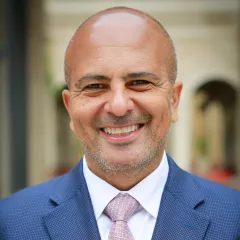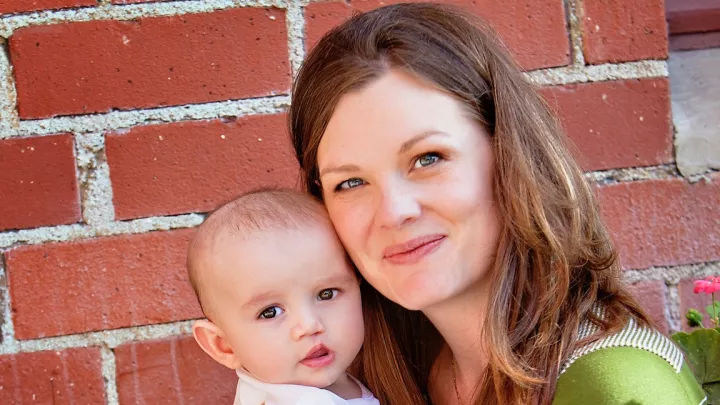
Jeffrey Hammoudeh, MD, DDS
Jeffrey Hammoudeh, MD, DDS, FACS, is one of an elite and small group of surgeons in the United States that is board-certified in oral maxillofacial surgery as well as plastic surgery with additional craniofacial fellowship training. He is director of the Jaw Deformities Care Program within the division of Plastic and Maxillofacial Surgery at Children's Hospital Los Angeles. Dr. Hammoudeh earned his medical and dental degrees from Northwestern University. This was followed by surgical internships in oral surgery and general surgery at Northwestern Memorial Hospital and Rush University Medical Center. Subsequent to that, he went on to complete his formal training in oral and maxillofacial surgery at the Harvard Program based out of the Mass General Hospital. During that training, Dr. Hammoudeh did additional training in general surgery and then subsequently utilized that foundation to do a fellowship in plastic and reconstructive surgery at the University of Miami. After completing his double doctorate and two residencies, he then moved on to the University of Southern California at Children's Hospital Los Angeles, where he completed a fellowship in pediatric plastic and craniofacial surgery.
Dr. Hammoudeh is a Professor and a leader at his field at Children's Hospital Los Angeles with faculty appointment at the Keck School of Medicine of the University of Southern California as well as the Herman Ostrow School of Dentistry of USC.
In addition to his leadership positions at Children's Hospital Los Angeles, Dr. Hammoudeh is a recognized leader in pediatric plastic surgery and has active research in neonatal cleft lip repair, neonatal distraction, and craniofacial reconstruction of the jaws. He is the primary investigator and the lead author and surgeon in neonatal cleft lip repair where currently children born with cleft lip and palates are able to undergo their cleft lip repair as early as two weeks of life. He has co-authored many book chapters, peer-reviewed journal articles, lectured nationally as well as internationally. He is a recognized leader in the field and provides cutting-edge care to children in Los Angeles.
Craniofacial Surgery; Orthognathic Surgery; Craniofacial tumor resection
Education
Northwestern University Medicine School
Northwestern Memorial Hospital/Chicago: Oral & Maxillofacial Surgery
Massachusetts General Hospital/Harvard Program (Oral and maxillofacial Surgery); University of Miami/Jackson Memorial Hospital (Plastic and Reconstructive Surgery)
USC/Childrens Hospital Los Angeles (Pediatric Plastic and Craniofacial Surgery)
Accomplishments
Board Certified Plastic Surgeon; Board Certified Oral & Maxillofacial Surgeon
California Association of Oral/Maxillofacial Surgeons; American College of Surgeons, Fellow; American Association of Oral/Maxillofacial Surgeons; American Cleft Palate-Craniofacial Association; American Society of Maxillofacial Surgeons
Publications
Nazarian-Mobin, Karatsoyni, Gamer, Gropper, Hammoudeh, Urata: A Comparison of Presurgical Nasoalveolar molding therapy in the Treatment Unilateral versus Bilateral cleft lip and palate. Plastic Reconstructive Surgery. 2010. [Epub ahead of print]
J. Hammoudeh, S. Nazarian, S. Yen, A. Panossian, D. Yamashita, M. Urata: Comparison Between BMP-2/Demineralized Bone Matrix an Autogenous Bone Grafts in Patients with Cleft lip and Palate. JOMS 68(9):E32, 09/2010
Hammoudeh, Davis, Ward, Bingdinavale, Urata: Neonatal Mandibular Distraction for treatment of Obstructive Sleep Apnea. Cleft Palate-Craniofacial Journal. 2010. [Epub ahead of print]
Lypka MA, Melrose R, Rizvi M, Urata M, Hammoudeh J: A mandibular mass in a pediatric patient. J Oral Maxillofacial Surgery. 2011. [Epub ahead of print]
Research
BMP Utilization for Repair of Alveolar Clefts
Neonatal Distractions as an Alternative to Tracheostomy
Early Lip Repair Research: Cleft lip and palate is one of the most common congenital anomalies in the United States. The severity of cleft lip and palate can be vast, ranging from incomplete cleft lip and nasal deformities to complete bilateral wide cleft lip and palates. Traditionally throughout the United States, patients undergo repair of their cleft lip nasal deformities anywhere from 3-6 months of age. Patients with more severe clefts, consisting of wide unilateral cleft lips and bilateral cleft lips, may additionally undergo nasal alveolar molding, a non-surgical treatment before surgery which involves placement of a brace inside the nose and mouth for several months to help mold these structures. This typically delays the cleft lip repair until approximately 5-6 months of age. During Dr. Jeffrey Hammoudeh's early career at Children's Hospital Los Angeles, he was able to treat newborn babies with congenital ear deformities utilizing a technique called ear well. This technique takes advantage of a newborn baby’s elevated levels of estrogen and progesterone, hormones that allow surgeons to mold and form the ear cartilage (see figure 1). Dr. Hammoudeh has ultimately been able to apply these principles to the treatment of clefts, helping to pioneer routine neonatal cleft lip nasal repair. Over the last 4 years at Children's Hospital Los Angeles, Dr. Hammoudeh has served as the lead investigator, demonstrating efficacy and safety in repairing cleft lip nasal deformities at as early as 10 days of life. This has provided a significant advantage to families interested in having their newborn undergo repair of the cleft nasal deformity shortly after birth, relieving a significant amount of family stress that can be associated with a protracted wait for repair. Additionally, Dr. Hammoudeh and his group have noted that the elevated levels of progesterone and estrogen which are critical for ear molding (figure 1) provide the same effect on the nasal cartilage. This allows the cartilage of the nose to undergo molding following repair while also capitalizing on the baby's elevated level of TGF beta, a hormone that allows for optimal wound healing. In this experience, they have operated on approximately 100 babies and have noted that repairing cleft lip and nasal deformities early in the first 2 weeks of life has allowed for superior results by minimizing scaring and helping the nose achieve optimal symmetry. Dr. Jeffrey Hammoudeh and Dr. William Magee are the only two craniofacial surgeons in the United States with this extensive experience that offer this breakthrough/cutting edge repair, allowing you and your child to return to optimal form and function shortly after birth. Both surgeons are available for consultation during pregnancy either via telemedicine or in person.
Media
KTLA - Two-week Old Baby Receives Cleft Palate Surgery
KCBS - Local Newborn's Surgery May Alter How Thousands Are Treated
CBS- Children's Hospital Los Angeles Performs Life Saving Surgery on young Boy from Iraq
CBS- Local Newborn's Surgery May Alter How Thousands Are Treated
CHLA Blog
On Her First Birthday, Julie Has a Lot to Smile About
CHLA and USC Plastic and Oral/Maxillofacial Surgeons Team Up to Correct Birth Defects
1301 20th St
Santa Monica, CA 90404
United States


